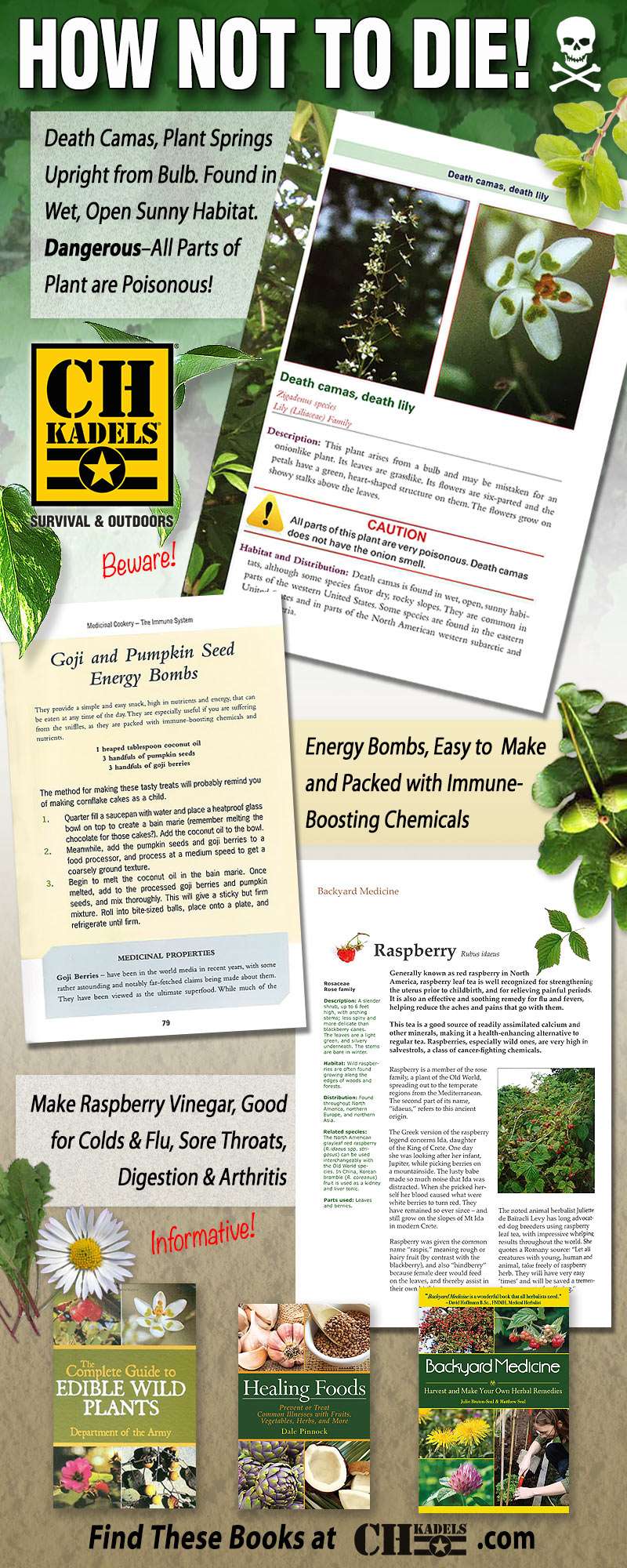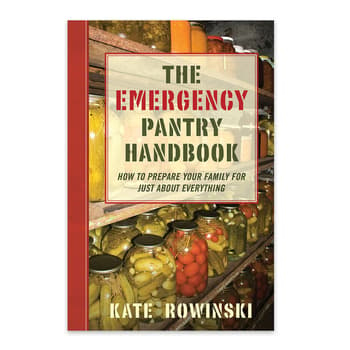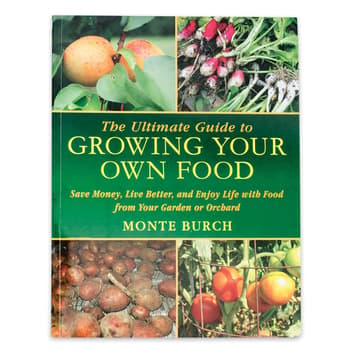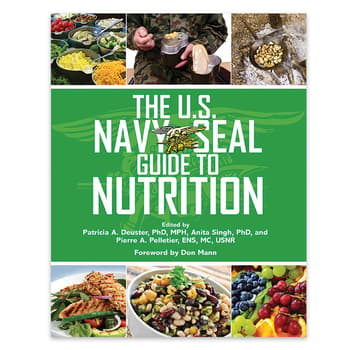Date Published: 2015-08-20
A Beginner's Guide To Edible And Medicinal Plants
By Adelia Ladson
Here at CH Kadels, we're always looking for ways to give our customers valuable information they can use. To do this, we make sure that we always stock a variety of books and manuals. Today, I want to talk about a few books that are chock-filled with knowledge on plants, fruits and vegetables.
Healing Foods by Dale Pinnock, nutritionist and medicinal cook, opens up the world of healthy eating and cooking in a whole new way. In this book, the presence of phytochemicals in plants and their benefits to the human body are explained. The first section gives information and recipes to benefit for the systems of the body including the skin, digestive system, heart and circulatory system, immune system, nervous system and the joints. The second half of the text gives a breakdown on common foods and their medicinal qualities. Since they are listed in alphabetical order, it's quick and easy to look something up.
The recipes presented in this book are easy-to-follow and, for the most part, have simple ingredients. What I like is that the components of a recipe are broken out and the healing properties are outlined for each. For example, The Flu-Fighing Soup recipe has as its ingredients: a red onion, green chilies, garlic, ginger, a butternut squash and shiitake mushrooms. Now, being from the South, I have eaten butternut squash is soup, stewed and in a pie but I never knew that it contained a strong antiviral and anti-parasitic chemical.
Backyard Medicine by herbalists and writers, Julie Bruton-Seal and Matthew Seal, is a beautifully put together book that gives the reader an extensive look at wild plants that can be harvested for their medicinal qualities. There is a brief introduction that discusses the hows of harvesting and storing, the equipment needed and the medicinal products that can be made. Then, the rest of the text is an alphabetical list of fifty wild plants and their specific properties. It also gives a little history on each and the best form to use them in whether as a tea, tincture, ointment or oil for a variety of ailments.
Now, this book was originally aimed at a United Kingdom audience but there are many wild herbs and plants that they have that are common to us, too. For example, honeysuckle can be found in many areas and herbalists use the flowers to treat sore throats, bronchitis and the common cold. I found it interesting that the bark of an Oak tree could be combined with other ingredients to make a toothpaste to treat gum disease and mouth ulcers.
The Complete Guide to Edible Wild Plants is a manual issued by the Department of the Army and it is filled with colorful reference photographs of a variety of plants that can be eaten in the wild. It starts out with an instructional section about the general edibility of wild plants including plant identification, an edibility test and preparation. It also talks briefly about using plants for medicine. It then goes into an extensive list of edible plants including information on where they can be found, what the look like and what parts can be eaten. This is an alphabetical list for easy reference. In the back of the book is a list of a few poisonous plants to avoid.
The book also has "cautions" highlighted throughout the book on some of the different plants to alert the reader of any possible dangers. For instance, there is a caution that green bamboo may explode in a fire or the simple fact that apple seeds have cyanide components in them.
Here at CH Kadels, we're always looking for ways to give our customers valuable information they can use. To do this, we make sure that we always stock a variety of books and manuals. Today, I want to talk about a few books that are chock-filled with knowledge on plants, fruits and vegetables.
Healing Foods by Dale Pinnock, nutritionist and medicinal cook, opens up the world of healthy eating and cooking in a whole new way. In this book, the presence of phytochemicals in plants and their benefits to the human body are explained. The first section gives information and recipes to benefit for the systems of the body including the skin, digestive system, heart and circulatory system, immune system, nervous system and the joints. The second half of the text gives a breakdown on common foods and their medicinal qualities. Since they are listed in alphabetical order, it's quick and easy to look something up.
The recipes presented in this book are easy-to-follow and, for the most part, have simple ingredients. What I like is that the components of a recipe are broken out and the healing properties are outlined for each. For example, The Flu-Fighing Soup recipe has as its ingredients: a red onion, green chilies, garlic, ginger, a butternut squash and shiitake mushrooms. Now, being from the South, I have eaten butternut squash is soup, stewed and in a pie but I never knew that it contained a strong antiviral and anti-parasitic chemical.
Backyard Medicine by herbalists and writers, Julie Bruton-Seal and Matthew Seal, is a beautifully put together book that gives the reader an extensive look at wild plants that can be harvested for their medicinal qualities. There is a brief introduction that discusses the hows of harvesting and storing, the equipment needed and the medicinal products that can be made. Then, the rest of the text is an alphabetical list of fifty wild plants and their specific properties. It also gives a little history on each and the best form to use them in whether as a tea, tincture, ointment or oil for a variety of ailments.
Now, this book was originally aimed at a United Kingdom audience but there are many wild herbs and plants that they have that are common to us, too. For example, honeysuckle can be found in many areas and herbalists use the flowers to treat sore throats, bronchitis and the common cold. I found it interesting that the bark of an Oak tree could be combined with other ingredients to make a toothpaste to treat gum disease and mouth ulcers.
The Complete Guide to Edible Wild Plants is a manual issued by the Department of the Army and it is filled with colorful reference photographs of a variety of plants that can be eaten in the wild. It starts out with an instructional section about the general edibility of wild plants including plant identification, an edibility test and preparation. It also talks briefly about using plants for medicine. It then goes into an extensive list of edible plants including information on where they can be found, what the look like and what parts can be eaten. This is an alphabetical list for easy reference. In the back of the book is a list of a few poisonous plants to avoid.
The book also has "cautions" highlighted throughout the book on some of the different plants to alert the reader of any possible dangers. For instance, there is a caution that green bamboo may explode in a fire or the simple fact that apple seeds have cyanide components in them.




